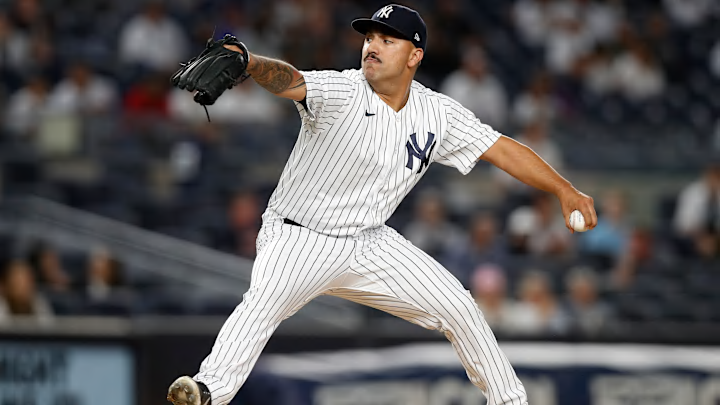3. Michael Kopech
Michael Kopech is a 27-year-old righty who is known for his power fastball and wicked slider. Drafted in 2014, Kopech rose at a steady rate, making his debut in 2018 for the Chicago White Sox. Once a top prospect in all of baseball, Kopech was able to translate that prospect status into relative success in 2021 and 2022.
Across 188.2 innings pitched in 2021 and 2022, Kopech sported a 3.53 ERA and a 3.93 FIP. He also struck out nearly 10 batters per nine innings while allowing fewer than 7 hits per nine innings. Kopech was great at limiting hard contact, as he only allowed 1.1 home runs per nine innings and found himself in the 72nd percentile in 2021 at hard hit percentage. While Kopech was dominant in 69 innings in 2021, he did start showing some cracks in 2022. He started walking more batters and striking out fewer. His SO/W ratio went from 4.29 in 2021 to 1.84 in 2022.
Kopech would very clearly be a buy-low pitcher. While his struggles this last year and a half aren't attributable to injuries, they could be attributed to increased walk rates and increased hard-hit percentages against him. In 2021, Kopech's had a +1 run value on his slider. That seems to fit, as his slider was once graded at a 65 on an 80-point scale. While his four-seamer has maintained its power and whiff rates, the slider is now a -6 run value according to Baseball Savant.
Despite Kopech's recent prospect rankings (#2 in the White Sox organization in 2021), he could be had for a reasonable price. He may be too low of a "buy-low player" given his clear struggles with command and limiting hard hits, but perhaps the Cardinals could find something to tweak. His 5.08 ERA, 6.42 FIP, 1.532 WHIP, and 87 ERA+ this year definitely lower his value on the trade market. He is also under team control for another two years.
